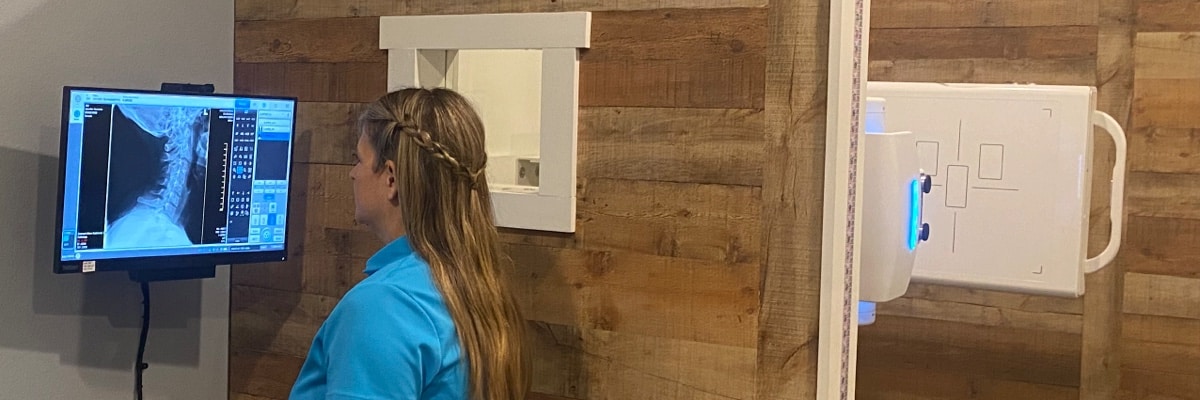
Getting your x-rays done at the chiropractor is easier than ever. Gone are the days of waiting for the x-rays to be processed, or going to an imaging center to have x-rays sent to your chiropractor. Element Chiropractic now has its very own digital x-ray machine in their office!
Rather than bringing in Clark Kent and his Superman X-ray vision, we use a machine. Not as exciting, but definitely more reliable. X-rays are used to give the chiropractor an inside look at what’s going on structurally. Because chiropractors treat the musculoskeletal parts of the body, the x-ray is an integral tool for their practice.
Chiropractors x-ray patients primarily for bone evaluation, they can also be used to look at bone alignment, joint spaces and surgical hardware.
Your chiropractic provider may recommend x-rays to look carefully at your bone health and to evaluate your internal structure. It’s best to choose a chiropractor with X-ray on premise so they can match what they see with the X-rays with their chiropractic treatments.
Your bones give you the shape and support that your body needs, along with the storage and distribution of vital minerals, such as calcium. Paying attention to your bone health, and obtaining an x-ray when recommended can help diagnose and/or detect the following:
Your skeleton provides the framework for your body and understanding how that structure is built is important to determine the best care for you. An x-ray can reveal structural problems within your spine or extremities that may contribute to your complaints or that may lead to future problems if not addressed now. Here are a few things chiropractors look for in your x-ray images:
X-rays can take as little as 15-20 minutes, even if the chiropractor is taking x-rays of three different body parts. Just like a digital picture has greater quality than a film camera, the digital x-ray image is available immediately, and has higher quality. The chiropractor can also zoom in, increase the contrast, or change settings so diagnosing issues is easier than before. Having the results immediately is helpful for creating and beginning treatment as soon as possible, to help you feel better sooner. The in-office x-ray makes it mostly a one-stop-shop for your chiropractic treatment, making it easier than ever.
After the x-rays are taken, you can expect the following:
A chiropractor in Oregon is fully licensed to take and read x-rays as part of her scope of practice. In some cases, the chiropractor may determine the x-rays need additional review and will send them digitally over to a radiologist; the results typically come back to the chiropractor within one day.
Most insurance companies will cover the cost of x-rays taken by a chiropractor. You may have a copay or coinsurance amount for x-rays. Some insurance plans may require pre-authorization for x-rays, but we will check before taking imaging. Some insurance plans like Medicare only cover x-rays ordered by their medical doctor, but many opt to pay out of pocket for the convenience.
X-rays are a fantastic starting point for a treatment plan with a chiropractor. There are, however, some cases in which a patient may need additional imaging. Your chiropractor can typically make a direct referral to an imaging center for additional diagnostic imaging. If pre-authorization is required, then we will help with this step.
Here are a few other diagnostic imaging options that our chiropractor will refer you to, if needed:
The x-ray is a fantastic tool for chiropractors. It helps them diagnose underlying issues and create a tailored treatment plan that is functional and accurate to help you get back to feeling like yourself.